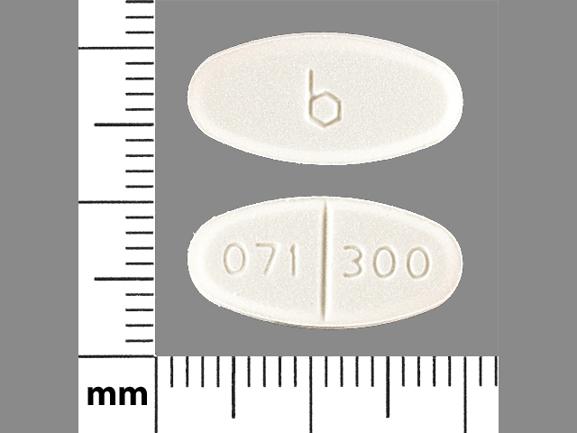Isoniazid Side Effects
Medically reviewed by Drugs.com. Last updated on Apr 9, 2023.
Applies to isoniazid: solution, tablet.
Warning
Intramuscular route (Solution)
Severe and sometimes fatal hepatitis has been reported with isoniazid therapy and may occur even after many months of treatment. The risk for hepatitis increases with advancing age, concomitant alcohol use, chronic liver disease, and injection drug use. Patients given isoniazid should be carefully monitored and interviewed at monthly intervals. For persons 35 and older, in addition to monthly symptom reviews, hepatic enzymes (specifically, AST and ALT (formerly SGOT and SGPT, respectively) should be measured prior to starting isoniazid therapy and periodically throughout treatment. An increased risk of fatal hepatitis associated with isoniazid has been reported in women, particularly black and Hispanic women. The risk may also be increased during the post partum period. More careful monitoring should be considered in these groups, possibly including more frequent laboratory monitoring.
Oral route (Tablet; Syrup)
Severe and sometimes fatal hepatitis has been reported with isoniazid therapy and may occur even after many months of treatment. The risk for hepatitis increases with advancing age, concomitant alcohol use, chronic liver disease, and injection drug use. Patients given isoniazid should be carefully monitored and interviewed at monthly intervals. For persons 35 and older, in addition to monthly symptom reviews, hepatic enzymes (specifically, AST and ALT (formerly SGOT and SGPT, respectively) should be measured prior to starting isoniazid therapy and periodically throughout treatment. An increased risk of fatal hepatitis associated with isoniazid has been reported in women, particularly black and Hispanic women. The risk may also be increased during the post partum period. More careful monitoring should be considered in these groups, possibly including more frequent laboratory monitoring.
Serious side effects of Isoniazid
Along with its needed effects, isoniazid may cause some unwanted effects. Although not all of these side effects may occur, if they do occur they may need medical attention.
Check with your doctor immediately if any of the following side effects occur while taking isoniazid:
More common
- Clumsiness or unsteadiness
- dark urine
- loss of appetite
- nausea or vomiting
- numbness, tingling, burning, or pain in hands and feet
- unusual tiredness or weakness
- yellow eyes or skin
Rare
- Blurred vision or loss of vision, with or without eye pain
- convulsions (seizures)
- fever and sore throat
- joint pain
- mental depression
- mood or other mental changes
- skin rash
- unusual bleeding or bruising
Other side effects of Isoniazid
Some side effects of isoniazid may occur that usually do not need medical attention. These side effects may go away during treatment as your body adjusts to the medicine. Also, your health care professional may be able to tell you about ways to prevent or reduce some of these side effects.
Check with your health care professional if any of the following side effects continue or are bothersome or if you have any questions about them:
More common
- Diarrhea
- stomach pain
For injection form
- Irritation at the place of injection
Dark urine and yellowing of the eyes or skin (signs of liver problems) are more likely to occur in patients over 50 years of age.
For Healthcare Professionals
Applies to isoniazid: intramuscular solution, oral syrup, oral tablet.
General
The most commonly reported side effects included mild and transient elevation of serum transaminase levels, peripheral neuropathy, and hepatitis.[Ref]
Nervous system
Peripheral neuropathy usually occurred with doses over 5 mg/kg.[Ref]
Hepatic
Very common (10% or more): Mild and transient elevation of serum transaminase levels (up to 20%)
Uncommon (0.1% to 1%): Hepatitis
Frequency not reported: Abnormal liver function, bilirubinemia, jaundice, mild liver dysfunction, severe hepatitis/fatal hepatitis[Ref]
Mild and transient elevation in serum transaminases usually occurred in the first 1 to 6 months of treatment, but could occur at any time during treatment. Transaminase levels returned to normal with continued treatment in most cases.[Ref]
Nervous system
Common (1% to 10%): Peripheral neuropathy
Frequency not reported: Convulsions, memory impairment, optic neuritis, paresthesia of the feet/hands, toxic encephalopathy[Ref]
Dermatologic
Rare (0.01% to 0.1%): Eosinophilia systemic symptoms, toxic epidermal necrolysis
Frequency not reported: Allergic skin reaction, alopecia, drug reaction with eosinophilia and systemic symptoms (DRESS) syndrome, erythema multiforme, exfoliative dermatitis, exfoliative skin eruptions, maculopapular skin eruptions, morbilliform skin eruptions, purpura, purpuric skin eruptions, rash, skin eruptions[Ref]
Hematologic
Frequency not reported: Agranulocytosis, anemia, aplastic anemia, eosinophilia, hemolytic anemia, lymphadenopathy, sideroblastic anemia, thrombocytopenia[Ref]
Metabolic
Frequency not reported: Anorexia, hyperglycemia, metabolic acidosis, pellagra, pyridoxine deficiency[Ref]
Gastrointestinal
Frequency not reported: Epigastric distress, nausea, pancreatitis, vomiting[Ref]
Other
Frequency not reported: Fatigue, fever, malaise, weakness[Ref]
Psychiatric
Frequency not reported: Psychosis, toxic psychosis[Ref]
Musculoskeletal
Frequency not reported: Lupoid syndrome, systemic lupus erythematosus-like syndrome[Ref]
Ocular
Frequency not reported: Optic atrophy[Ref]
Genitourinary
Frequency not reported: Bilirubinuria[Ref]
Cardiovascular
Frequency not reported: Vasculitis[Ref]
Endocrine
Frequency not reported: Gynecomastia[Ref]
Immunologic
Frequency not reported: Rheumatic syndrome[Ref]
Local
Frequency not reported: Local irritation[Ref]
More about isoniazid
- Check interactions
- Compare alternatives
- Pricing & coupons
- Reviews (28)
- Drug images
- Side effects
- Dosage information
- During pregnancy
- Drug class: hydrazide derivatives
- Breastfeeding
- En español
Patient resources
- Isoniazid drug information
- Isoniazid (Advanced Reading)
- Isoniazid Tablets
- Isoniazid Injection
- Isoniazid Oral Solution
Other brands
Professional resources
- Isoniazid monograph
- Isoniazid Injection (FDA)
- Isoniazid Solution (FDA)
- Isoniazid Syrup (FDA)
- Isoniazid Tablets (FDA)
Related treatment guides
References
1. Product Information. INH (isoniazid). Ciba Pharmaceuticals, Summit, NJ.
2. Product Information. Nydrazid (isoniazid). Apothecon Inc. 2001;PROD.
3. Cerner Multum, Inc. UK Summary of Product Characteristics.
4. Product Information. Isoniazid (isoniazid). Barr Laboratories Inc. 2006.
5. Cerner Multum, Inc. Australian Product Information.
Further information
Always consult your healthcare provider to ensure the information displayed on this page applies to your personal circumstances.
Some side effects may not be reported. You may report them to the FDA.

